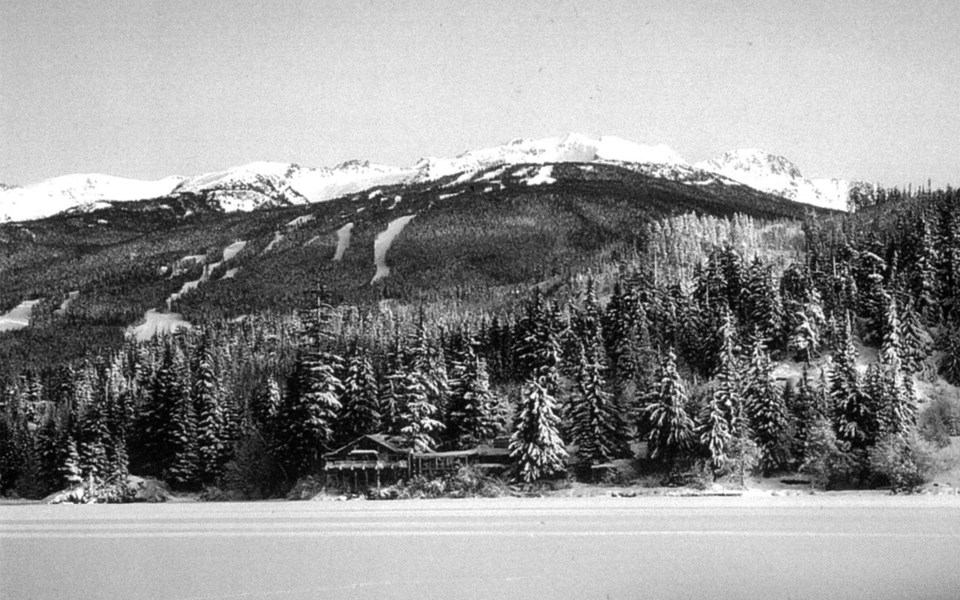When Hillcrest Lodge first opened for business in 1946 it was not meant to be a year-round operation. Summers were so busy with regular visitors and guests that Jack and Cis Mansell, who built the lodge with their sons Doug and Loyd, would “say goodbye to each other in May and hello in October.” In October, Hillcrest Lodge closed for the season and Jack and Cis would often leave Alta Lake to spend winters in warmer climes. This seasonal closure would, however, change in the 1960s.
Jack and Cis retired in 1958 and Doug and his wife Barb took over the management of the lodge. In the early 1960s, Doug and Loyd kept the lodge open on weekends through the winter and even built a small rope tow on the property that they ran for skiers. In 1965, as the first lifts were completed on Whistler Mountain, Doug and Barb sold Hillcrest Lodge to a group from Vancouver led by Glen Mason. The lodge’s name was changed to Mount Whistler Lodge and, instead of attracting summer guests, it was marketed towards skiers.
By the winter of 1967/68, winter guests could pay $9.50/day to stay and receive three meals at Mount Whistler Lodge (for those who brought their own sleeping bags, the rate was only $8.50), conveniently located only 1.6 kilometres (one mile) from the gondola. The lodge also offered entertainment in the form of pizza and music, including a jug band on Thursday nights.
An advertisement from the winter of 1971/72 announced that the lodge was under new management and introduced “The Purple Ski Cabaret,” though it featured few details about what the cabaret included. Through the early 1970s the Mount Whistler Lodge also marketed itself as “open all year round.” Its close proximity to the lifts appealed to skiers while the lodge also drew summer visitors with promises of swimming, fishing, boating and waterskiing on four nearby lakes, horseback rides through the valley, and more.
Mount Whistler Lodge also became popular among Whistler area residents. According to an article from the October/November 1979 issue of the Whistler Answer, Mount Whistler Lodge (which had by then ceased operations) was “quite simply, the best damn boogie, rockin, boppin, rip-roarin, down home, funky, shit kickin place to ever serve a beer.” The lodge itself was described as “a log cabin right on the lake, with cracked Tiffany lamps and mildew stains on the ceiling.” The Answer attributed the “looseness” of the lodge between 1973 and 1974 to managers Rob and Jen Houseman, who figured the best way to ensure rules were not broken was to have no rules. Before it closed permanently in the mid 1970s, Mount Whistler Lodge was even the venue for the first two Freakers Balls.
The Answer ended its article by declaring that, “The Whistler Lodge, although closed today, remains one of the few structures today in Whistler that could be labelled heritage buildings.”
Two years earlier, in 1977, Rainbow Lodge had been mostly destroyed by a fire on the other side of Alta Lake and other buildings, such as the Soo Valley Logging Camp and the Alta Lake Community Hall, had already been burnt down. In 1986 the main building of the Mount Whistler Lodge joined them and was burnt down as practice for the Whistler Fire Department. The cabins remained for some years, but today few physical traces can be found of Hillcrest or Mount Whistler Lodge.




